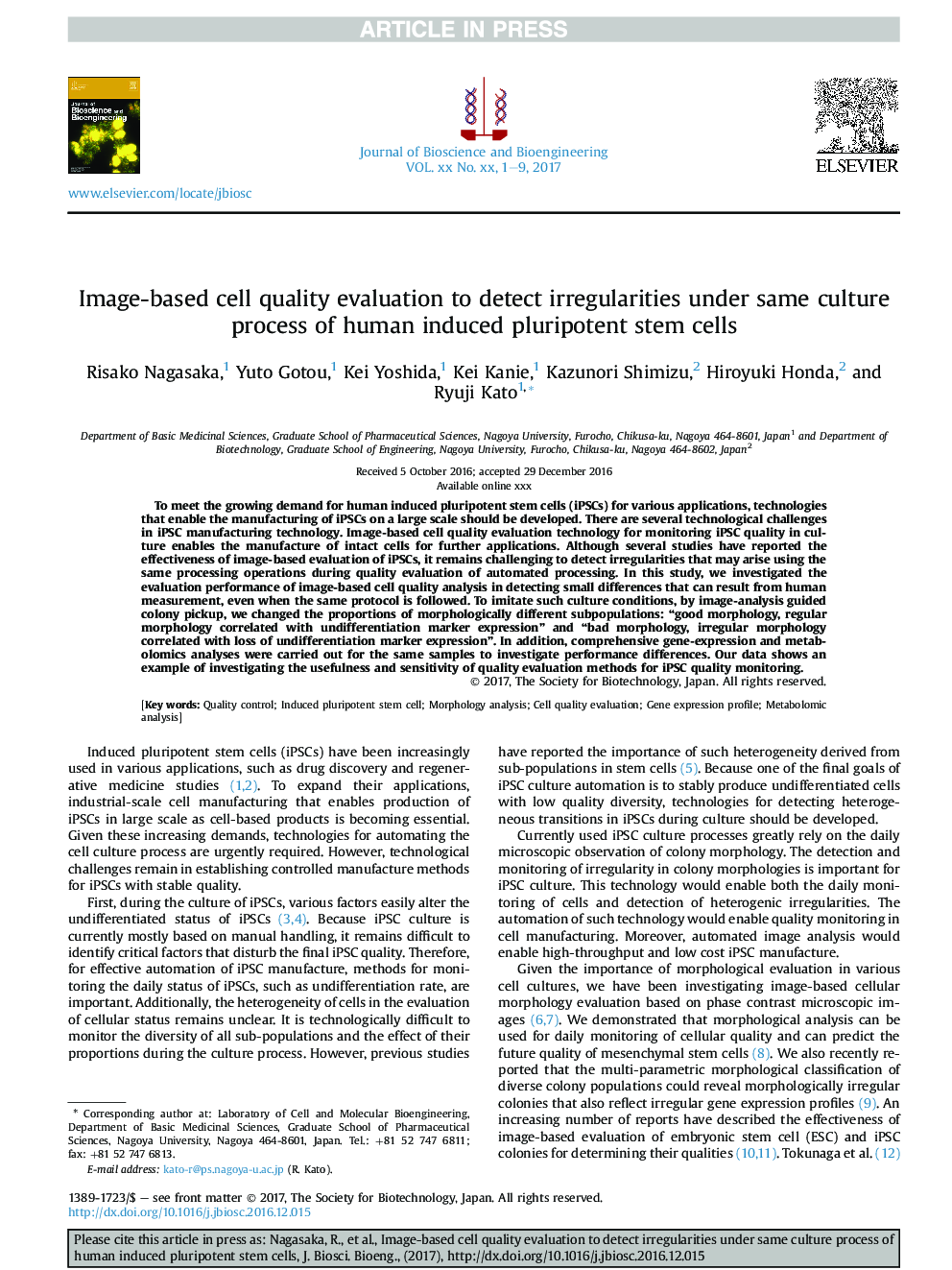| Article ID | Journal | Published Year | Pages | File Type |
|---|---|---|---|---|
| 4753376 | Journal of Bioscience and Bioengineering | 2017 | 9 Pages |
Abstract
To meet the growing demand for human induced pluripotent stem cells (iPSCs) for various applications, technologies that enable the manufacturing of iPSCs on a large scale should be developed. There are several technological challenges in iPSC manufacturing technology. Image-based cell quality evaluation technology for monitoring iPSC quality in culture enables the manufacture of intact cells for further applications. Although several studies have reported the effectiveness of image-based evaluation of iPSCs, it remains challenging to detect irregularities that may arise using the same processing operations during quality evaluation of automated processing. In this study, we investigated the evaluation performance of image-based cell quality analysis in detecting small differences that can result from human measurement, even when the same protocol is followed. To imitate such culture conditions, by image-analysis guided colony pickup, we changed the proportions of morphologically different subpopulations: “good morphology, regular morphology correlated with undifferentiation marker expression” and “bad morphology, irregular morphology correlated with loss of undifferentiation marker expression”. In addition, comprehensive gene-expression and metabolomics analyses were carried out for the same samples to investigate performance differences. Our data shows an example of investigating the usefulness and sensitivity of quality evaluation methods for iPSC quality monitoring.
Keywords
Related Topics
Physical Sciences and Engineering
Chemical Engineering
Bioengineering
Authors
Risako Nagasaka, Yuto Gotou, Kei Yoshida, Kei Kanie, Kazunori Shimizu, Hiroyuki Honda, Ryuji Kato,
